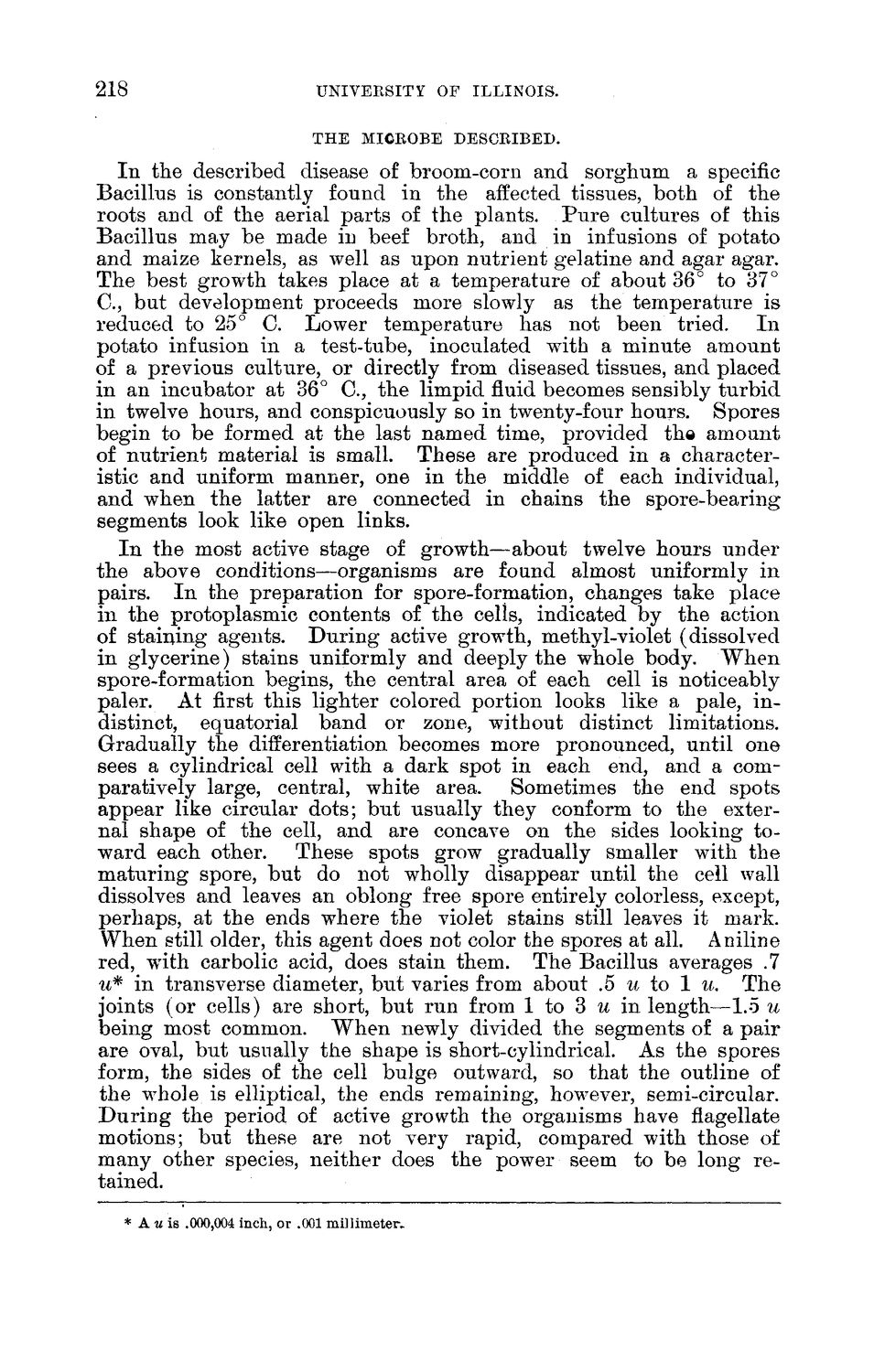| |
| |
Caption: Board of Trustees Minutes - 1888
This is a reduced-resolution page image for fast online browsing.

EXTRACTED TEXT FROM PAGE:
218 UNIVERSITY OF ILLINOIS. THE MICROBE DESCRIBED. In the described disease of broom-corn and sorghum a specific Bacillus is constantly found in the affected tissues, both of the roots and of the aerial parts of the plants. Pure cultures of this Bacillus may be made in beef broth, and in infusions of potato and maize kernels, as well as upon nutrient gelatine and agar agar. The best growth takes place at a temperature of about 36° to 37° C , but development proceeds more slowly as the temperature is reduced to 25° C. Lower temperature has not been tried. I n potato infusion in a test-tube, inoculated with a minute amount of a previous culture, or directly from diseased tissues, and placed in an incubator at 36° C , the limpid fluid becomes sensibly turbid in twelve hours, and conspicuously so in twenty-four hours. Spores begin to be formed at the last named time, provided the amount of nutrient material is small. These are produced in a characteristic and uniform manner, one in the middle of each individual, and when the latter are connected in chains the spore-bearing segments look like open links. I n the most active stage of growth—about twelve hours under the above conditions—organisms are found almost uniformly in pairs. I n the preparation for spore-formation, changes take place in the protoplasmic contents of the cells, indicated by the action of staining agents. During active growth, methyl-violet (dissolved in glycerine) stains uniformly and deeply the whole body. When spore-formation begins, the central area of each cell is noticeably paler. At first this lighter colored portion looks like a pale, indistinct, equatorial band or zone, without distinct limitations. Gradually the differentiation becomes more pronounced, until one sees a cylindrical cell with a dark spot in each end, and a comparatively large, central, white area. Sometimes the end spots appear like circular dots; but usually they conform to the external shape of the cell, and are concave on the sides looking toward each other. These spots grow gradually smaller with the maturing spore, but do not wholly disappear until the cell wall dissolves and leaves an oblong free spore entirely colorless, except, perhaps, at the ends where the violet stains still leaves it mark. When still older, this agent does not color the spores at all. Aniline red, with carbolic acid, does stain them. The Bacillus averages .7 u* in transverse diameter, but varies from about .5 u to 1 u. The joints (or cells) are short, but run from 1 to 3 u in length—1.5 u being most common. When newly divided the segments of a pair are oval, but usually the shape is short-cylindrical. As the spores form, the sides of the cell bulge outward, so that the outline of the whole is elliptical, the ends remaining, however, semi-circular. During the period of active growth the organisms have flagellate motions; but these are not very rapid, compared with those of many other species, neither does the power seem to be long retained. * A u is .000,004 inch, or .001 millimeter.
| |